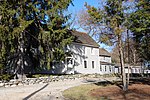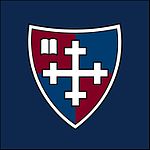Myopia Hunt Club
1882 establishments in MassachusettsBuildings and structures in Essex County, MassachusettsClubs and societies in the United StatesDefunct real tennis venuesGolf clubs and courses in Massachusetts ... and 4 more
Hamilton, MassachusettsSports in Essex County, MassachusettsSports venues completed in 1882U.S. Open (golf) venues

Myopia Hunt Club is a foxhunting and private country club in South Hamilton, Massachusetts, northeast of Boston. In the early years of the U.S. Open, the club hosted it four times: 1898, 1901, 1905, and 1908.
Excerpt from the Wikipedia article Myopia Hunt Club (License: CC BY-SA 3.0, Authors, Images).Myopia Hunt Club
Walnut Road,
Geographical coordinates (GPS) Address Nearby Places Show on map
Geographical coordinates (GPS)
| Latitude | Longitude |
|---|---|
| N 42.609 ° | E -70.859 ° |
Address
Myopia Hunt Club
Walnut Road
01984
Massachusetts, United States
Open on Google Maps







